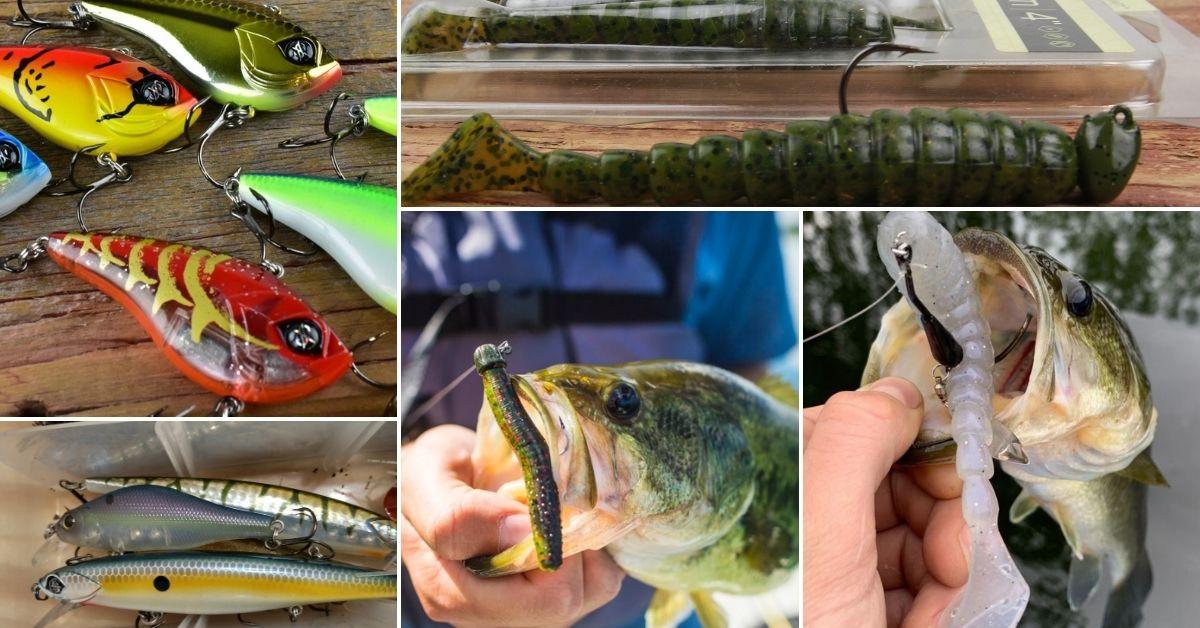Up North Angler: 5 Bass Baits That Are Crushing Right Now
Michigan angler Bill Mathews showcases 5 of his favorite spring baits for fishing up north. Bass habits remain similar anywhere you go, but when and where they decide to do things like move shallow, spawn, and transition into summer patterns depends on where they live.
The bass spawn might be long over with in the south, but in places like Michigan, Minnesota, and Wisconsin, not all bass have spawned, and some haven't even started yet.
This video comes from the perspective of a Michigan angler and the conditions he experiences in the spring. While his fishing season might not line up with yours, the tactics and ideas applied can still help you catch fish.
Here are five of our favorite bass fishing baits for fishing up north in the spring:
1) Lipless Crankbaits
Explore: Crankbaits
Retrieval Speed: Moderate to fast
Use: Covering water at various depths and speeds, especially around sparse grass
Noticeable Features: Tight wobbling action. Loud rattles
Tactics: The tight wobbling action coupled with the ability to be ripped through sparse grass makes lipless crankbait effective for spring fishing—shallow target flats, bays, and grass lines using baitfish or bluegill profiles.
2) Bladed Jigs
Explore: Bladed Jigs
Retrieval Speed: Starting slowly with speed increasing as water temperatures rise
Use: Covering water around shallow grass with a smooth and steady retrieve. Mimics baitfish, bluegill, and shad
Noticeable Features: Load vibrating action with a tight streamline action. Resistant to grass and sparse weeds making it a good shallow water spring bait
Tactics: Slowly wind your bladed jig early in the spring while focusing on shallow grass. Look for emerging Lilly stems or grass that is growing on shallow flats. Fan casting shallow water marinas, dock channels, bays, or backwater areas with a bladed jig is extremely effective almost anywhere spring fish are pushed up shallow.
3) Small Swimbaits
Explore: Soft Plastic Swimbaits
Retrieval Speed: Various. As long as the tail is kicking, you're in good shape
Use: Finesse applications for both largemouth and smallmouth in clear water. Also great for multi-species or used as a trailer
Noticeable Features: Natural swimming action that closely mimics small baitfish. Versatility, it's a bait that can be worked, slow along the bottom, at moderate speeds in the middle of the water column, or burned accross the surface as a makeshift topwater
Tactics: Pair small swimbaits with 1/8 to 1/4 oz. jig heads and target clear water fish throughout the year. Slide them on the back of a jig, spinnerbait, or bladed jig, for added bulk and action.
Rig small swimbaits weightless and target shallow water fish in creeks, rivers, and backwater ponds. The bait will hover near the surface while subtly kicking as you wind it in.
4) Suspending Jerkbaits
Explore: Jerkbaits
Retrieval Speeds: Stop and go with mixed speeds
Use: Jerkbaits work best in clean water where predatory fish can see the slash and rips from a darting jerkbait. Make long casts in shallow to moderate depths and use quick rips of the rod tip to get lively action from your bait
Noticeable Features: Suspending jerkbaits are neutrally buoyant which means they kind of hover in the water while not floating or sinking to the bottom. Jerkbaits will have narrow, slender bodies usually equipped with 2-3 treble hooks and feature a shallow bill protruding from below their head. Shallow diving jerkbaits are most popular which have a shallow bill just below their head. Deeper diving jerkbaits will have a larger bill
Tactics: Ripping a jerkbait across a shallow-water flat is an easy way to pick off roaming bass in the spring time. You can easily target pre-spawn bass and post-spawn bass as they transition from shallow in the spring. You can continuously wind a jerkbait and catch fish but most anglers use rip, rip, pause retroves. and daring action when quick ripping motions are used.
After making a couple of quick rips with your rod tip, give a brief 2-4 second long pause to let the fish catch up and crush your bait
5) Ned Rigs
Explore: Ned Rig Baits
Retrieval Speeds: Slowly and with small subtle strokes of the rod tip
Use: Rig lightweight 1/16-⅛ oz jig heads in shallow water or small rivers and then move up to 1/4oz sizes when fishing in deep water or heavier current
Noticeable Features: Ned Rigs are small, unassuming soft plastic worms rigged onto a lightweight jighead. The Ned Rig doesn't do much in the water compared to loud or other loud and flashy baits, but don’t let that fool you. These little rigs will catch fish everywhere
Tactics: There's no wrong way to retrieve a Ned Rig - you can drag it, hop it, swim it, or let it sit still on the bottom. Any of these tactics are an easy way to trigger a strike. Most fish recognize a Ned Rig as an easy meal, maybe a crawfish, goby, or small baitfish. To some, it might even look like a leech. No matter what it resembles, it always seems to end up in a fishes mouth.
Updated May 20th, 2021 at 10:36 AM CT


